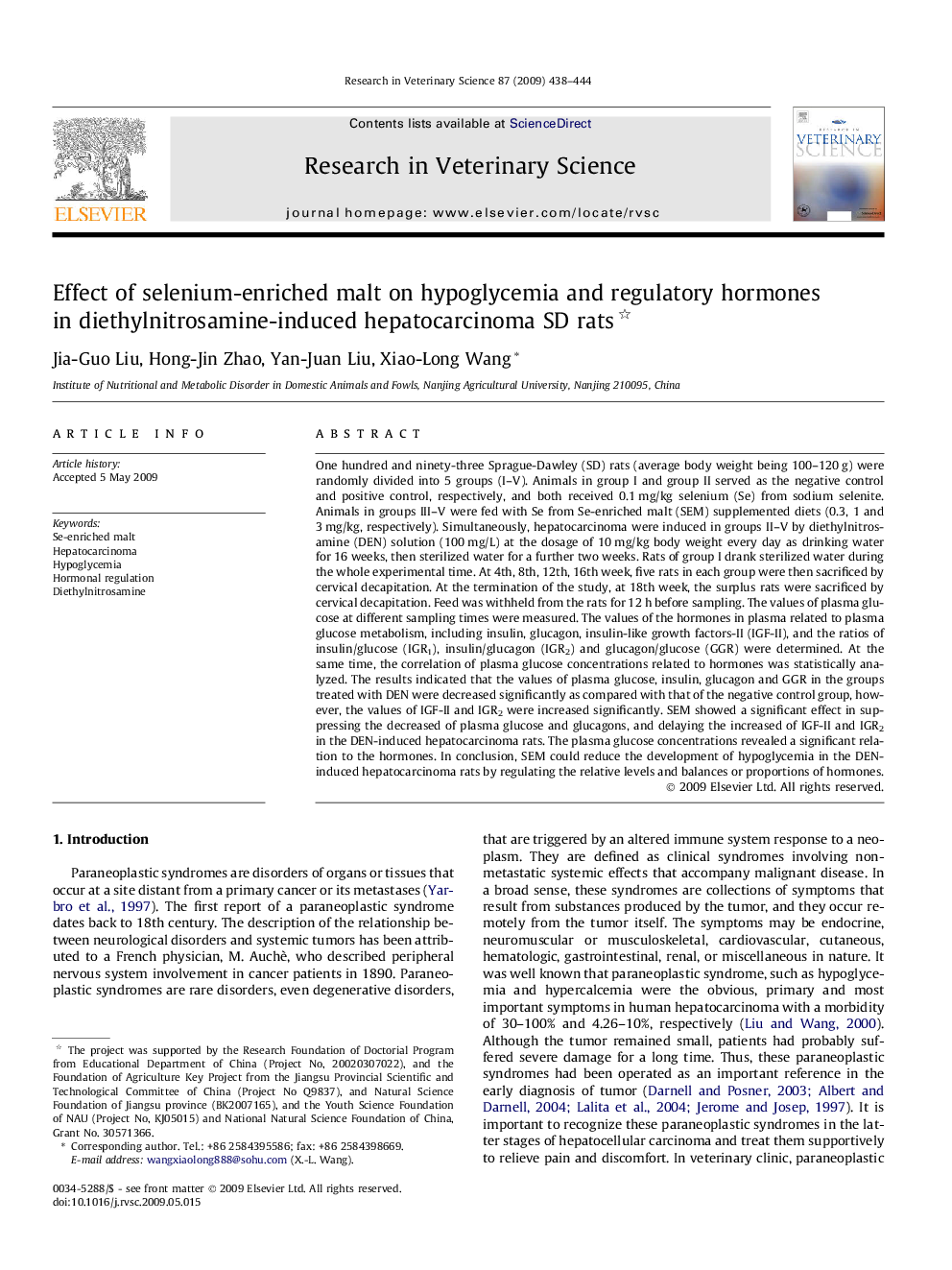| Article ID | Journal | Published Year | Pages | File Type |
|---|---|---|---|---|
| 2456190 | Research in Veterinary Science | 2009 | 7 Pages |
One hundred and ninety-three Sprague-Dawley (SD) rats (average body weight being 100–120 g) were randomly divided into 5 groups (I–V). Animals in group I and group II served as the negative control and positive control, respectively, and both received 0.1 mg/kg selenium (Se) from sodium selenite. Animals in groups III–V were fed with Se from Se-enriched malt (SEM) supplemented diets (0.3, 1 and 3 mg/kg, respectively). Simultaneously, hepatocarcinoma were induced in groups II–V by diethylnitrosamine (DEN) solution (100 mg/L) at the dosage of 10 mg/kg body weight every day as drinking water for 16 weeks, then sterilized water for a further two weeks. Rats of group I drank sterilized water during the whole experimental time. At 4th, 8th, 12th, 16th week, five rats in each group were then sacrificed by cervical decapitation. At the termination of the study, at 18th week, the surplus rats were sacrificed by cervical decapitation. Feed was withheld from the rats for 12 h before sampling. The values of plasma glucose at different sampling times were measured. The values of the hormones in plasma related to plasma glucose metabolism, including insulin, glucagon, insulin-like growth factors-II (IGF-II), and the ratios of insulin/glucose (IGR1), insulin/glucagon (IGR2) and glucagon/glucose (GGR) were determined. At the same time, the correlation of plasma glucose concentrations related to hormones was statistically analyzed. The results indicated that the values of plasma glucose, insulin, glucagon and GGR in the groups treated with DEN were decreased significantly as compared with that of the negative control group, however, the values of IGF-II and IGR2 were increased significantly. SEM showed a significant effect in suppressing the decreased of plasma glucose and glucagons, and delaying the increased of IGF-II and IGR2 in the DEN-induced hepatocarcinoma rats. The plasma glucose concentrations revealed a significant relation to the hormones. In conclusion, SEM could reduce the development of hypoglycemia in the DEN-induced hepatocarcinoma rats by regulating the relative levels and balances or proportions of hormones.
